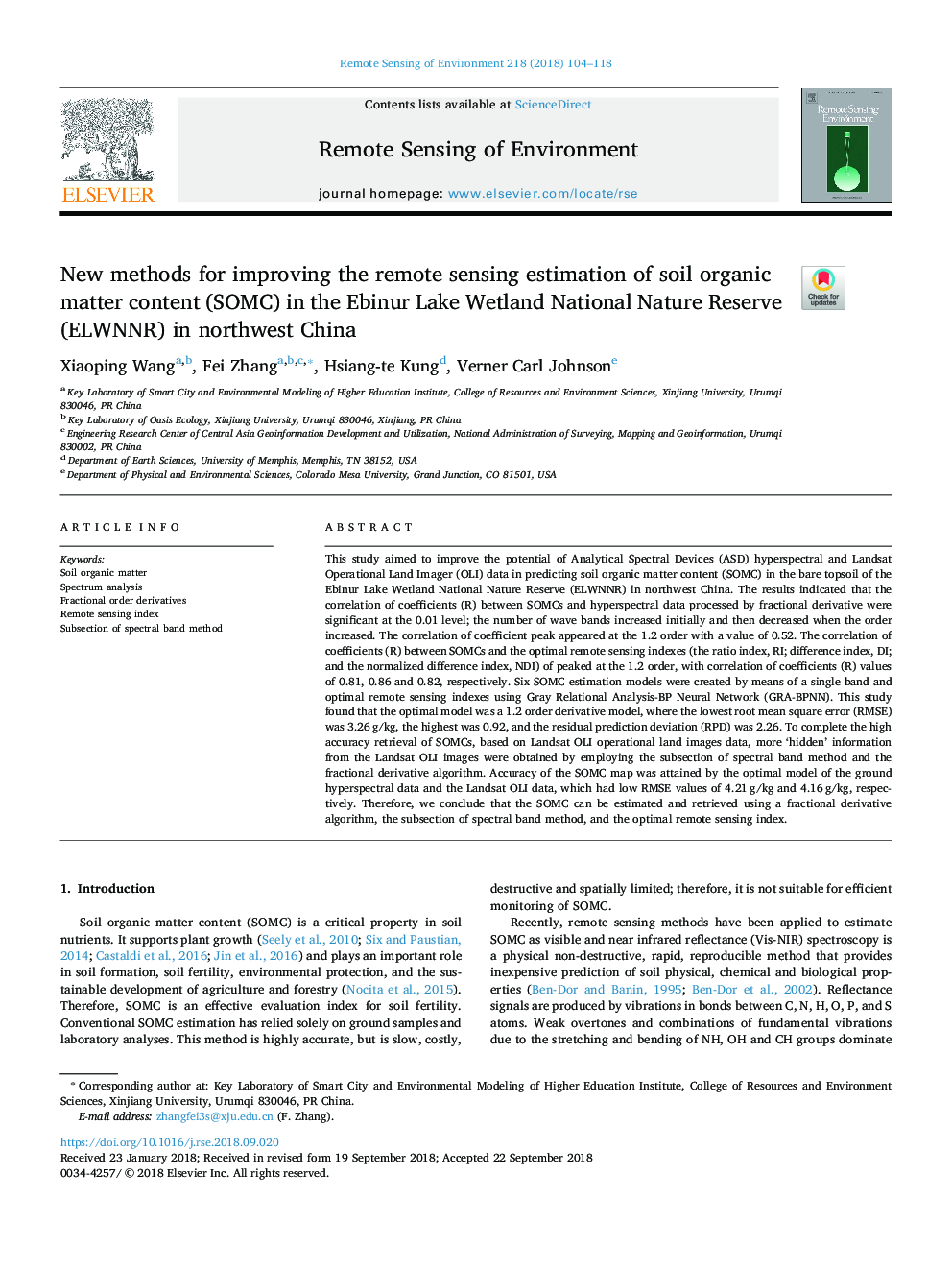| Article ID | Journal | Published Year | Pages | File Type |
|---|---|---|---|---|
| 11025034 | Remote Sensing of Environment | 2018 | 15 Pages |
Abstract
This study aimed to improve the potential of Analytical Spectral Devices (ASD) hyperspectral and Landsat Operational Land Imager (OLI) data in predicting soil organic matter content (SOMC) in the bare topsoil of the Ebinur Lake Wetland National Nature Reserve (ELWNNR) in northwest China. The results indicated that the correlation of coefficients (R) between SOMCs and hyperspectral data processed by fractional derivative were significant at the 0.01 level; the number of wave bands increased initially and then decreased when the order increased. The correlation of coefficient peak appeared at the 1.2 order with a value of 0.52. The correlation of coefficients (R) between SOMCs and the optimal remote sensing indexes (the ratio index, RI; difference index, DI; and the normalized difference index, NDI) of peaked at the 1.2 order, with correlation of coefficients (R) values of 0.81, 0.86 and 0.82, respectively. Six SOMC estimation models were created by means of a single band and optimal remote sensing indexes using Gray Relational Analysis-BP Neural Network (GRA-BPNN). This study found that the optimal model was a 1.2 order derivative model, where the lowest root mean square error (RMSE) was 3.26â¯g/kg, the highest was 0.92, and the residual prediction deviation (RPD) was 2.26. To complete the high accuracy retrieval of SOMCs, based on Landsat OLI operational land images data, more 'hidden' information from the Landsat OLI images were obtained by employing the subsection of spectral band method and the fractional derivative algorithm. Accuracy of the SOMC map was attained by the optimal model of the ground hyperspectral data and the Landsat OLI data, which had low RMSE values of 4.21â¯g/kg and 4.16â¯g/kg, respectively. Therefore, we conclude that the SOMC can be estimated and retrieved using a fractional derivative algorithm, the subsection of spectral band method, and the optimal remote sensing index.
Keywords
Related Topics
Physical Sciences and Engineering
Earth and Planetary Sciences
Computers in Earth Sciences
Authors
Xiaoping Wang, Fei Zhang, Hsiang-te Kung, Verner Carl Johnson,
